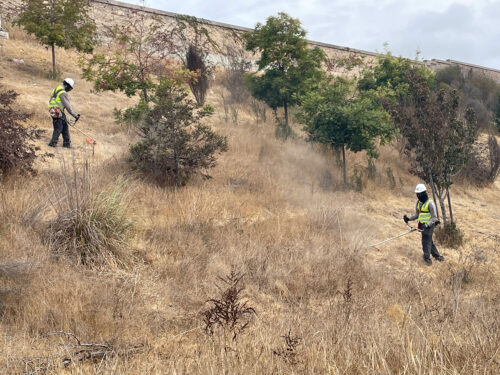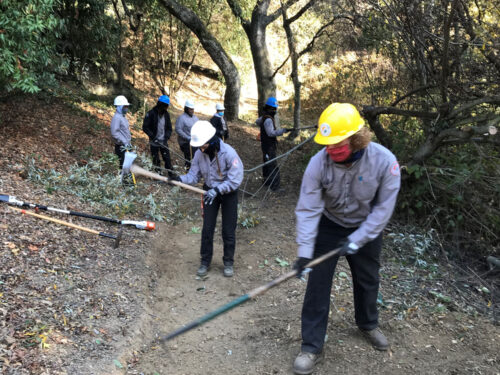
Engaging young adults in habitat restoration is an ideal vehicle for demonstrating the immediate impact of their work upon their environment. We are partnering with the City of Oakland on the Courtland Creek Restoration Project, which will protect, enhance, and restore approximately 950 feet of open creek channel. The Project will improve creek habitat and water quality, reduce trash accumulation and illegal dumping, repair steep and eroding creek banks, enhance climate change resilience and park appearance, and serve the community as an educational and recreational resource.
Each fall, Civicorps works with EBRPD at the Shorebird Sanctuary located at Martin Luther King Jr. Regional Shoreline in Oakland. The crews prepare, level, and clear an island of debris, and move bulk materials (sand and oyster shells) from the levee, by use of a small boat during the extreme, high tide events to designated spots on the island. They spread out the materials across the top of a filtered fabric barrier to create ideal shorebird nesting and roosting habitat for the Western Snowy Plover (federally threatened and state species of special concern), American Avocet, Black-Necked Stilt and Long-billed Curlew. This project can only occur during a small window each year during the endangered birds’ fall/winter nesting season, and only during high tides.
We also collaborate with other local corps. We partnered with Conservation Corps of the North Bay, on the SF Living Shorelines Project at Red Rock/Giant Marsh Projects. Crew members learned about native Olympia oyster and eelgrass habitats and projects to restore living shorelines in San Francisco Bay, and participated in preparing elements that are used in building native oyster reefs in San Francisco Bay. The State Coastal Conservancy (www.scc.ca.gov) and multiple state, federal, and non-profit partners constructed native oyster reefs and eelgrass beds as part of innovative habitat restoration and climate change adaptation pilot projects at two sites in San Francisco Bay. The projects helped implement 50 year regional goals for the restoration and protection of subtidal habitats in the bay (www.sfbaysubtidal.org). One of the goals of the project was to provide new information about the potential benefits of using natural reefs along the shoreline to protect habitat and urban communities in the face of sea level rise and climate change.
It was refreshing to see the next generation of resource professionals so willing to break a sweat and get down and dirty helping wildlife. They gave me great hope for the future of our precious natural treasures.
 Dr. David RienscheEBRPD Wildlife Biologist
Dr. David RienscheEBRPD Wildlife Biologist



